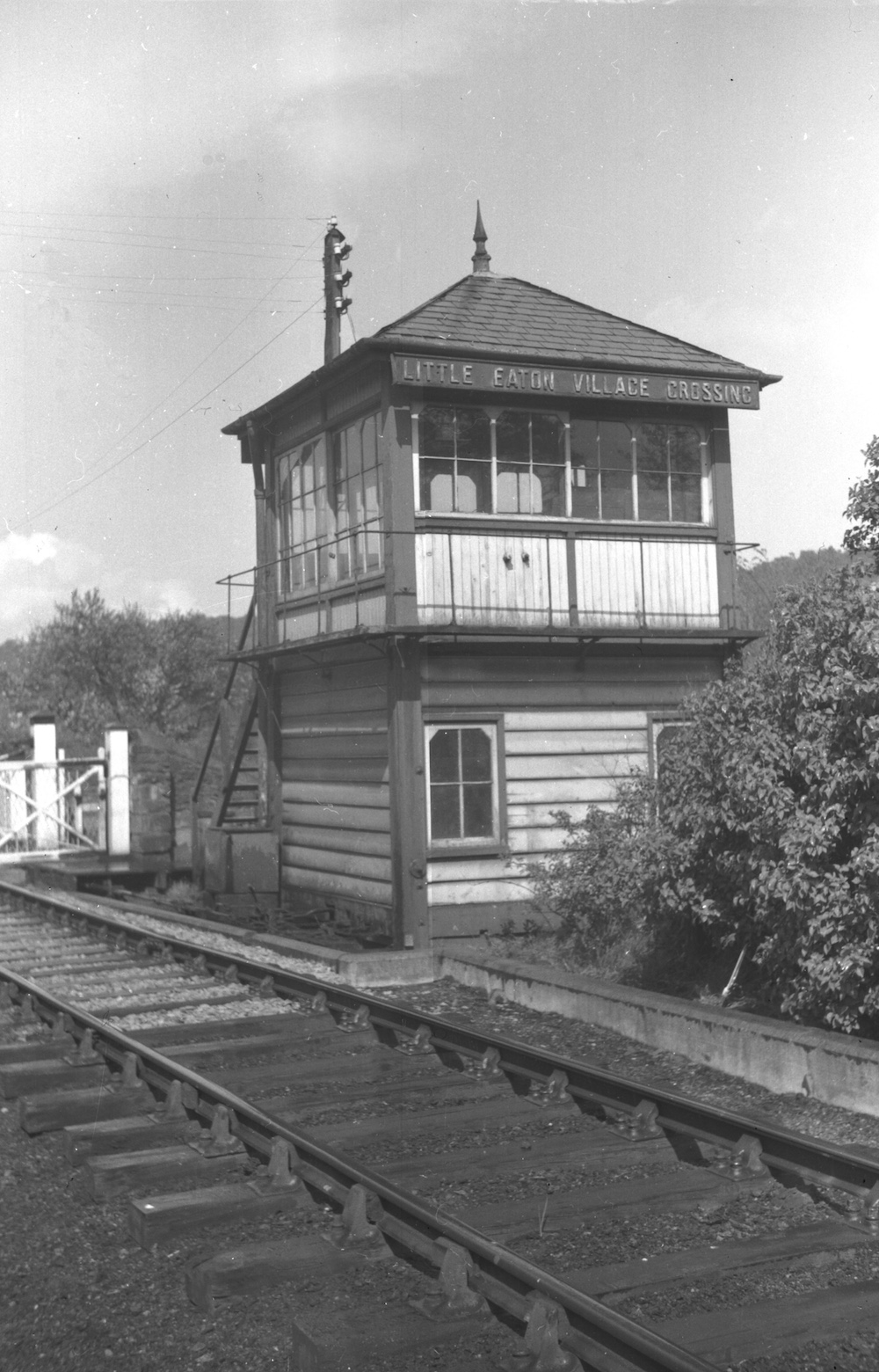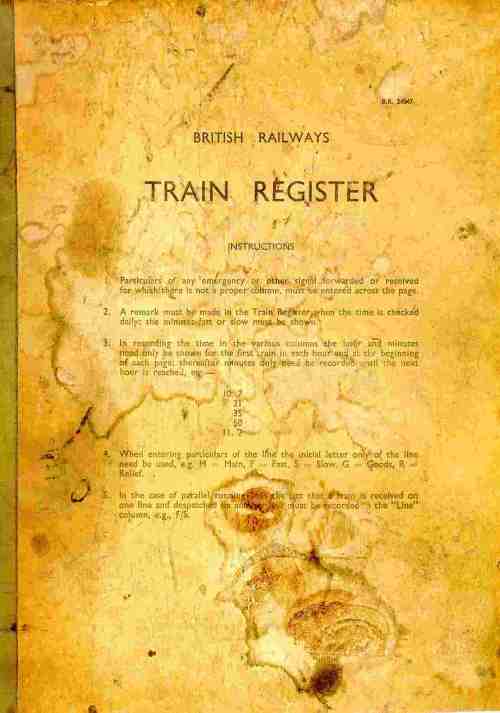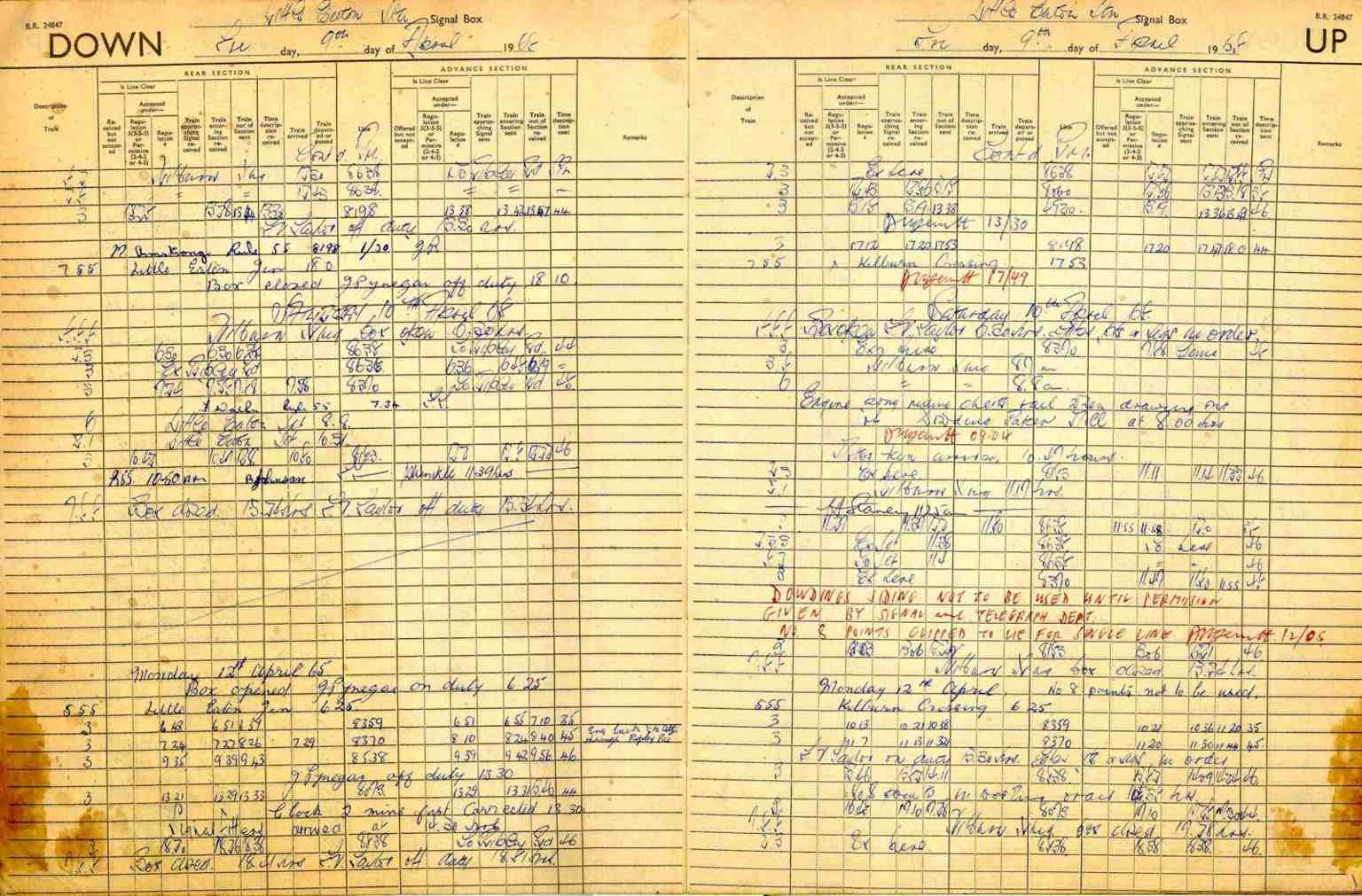Some thoughts about Little Eaton Village Crossing
The "discovery" of this photograph led me to express some opinions about Little Eaton Village Crossing, which I think are worth sharing here...

The thing about Little Eaton Village Crossing that always intrigues me is why no-one ever seems to have questioned the need for such a bloody long name! Especially not in LMS days when they decided to put the name on the ends, doubling the amount of letters needed and making a name board which was nearly wider than the box. It can’t have been to ensure all concerned knew the name of the settlement they were passing through; no one is going to get lost on a branch with a speed restriction that is slower than a galloping hose! And anyway, if that was the purpose of signal box names, how would they explain “Perrin & Harrison’s Sidings” or “LNW JCN” for example!?
I'm not expecting an answer, of course, just ranting!
The other observation about Village Crossing is that the provision of a signal box here was a complete extravagance anyway, an accident of timing. It was renewed 09NOV1902:
RAIL 491/122 MR Way & Works committee Book 33 Minute No.19392 of September 18th, 1902:-
On the recommendation of the Engineer, ordered that the following signal boxes be renewed; _Little Eaton Village Crossing... estimated cost £250.
.
It was a block post on the single line at that time, though the only necessity I can think of for it to be so would be that it would allow a train to approach from Coxbench (which was a block post until 19JUL1903) while a movement into or out of Dowdings Paper Mill was going on at Little Eaton Station.
The post was downgraded from a Signalman post to a Crossing Keeper post from 19NOV1903 (RAIL491/1026 page 475) so the assumption is that it ceased to be a block post at that time. The timing has to be related to the abolition of Coxbench with the downgrading of the connection into Bean & Slater’s Quarry to a stage released by the token (and removed altogether on 27JUN1909). The irony of all that though seems to be that the job would be tied-up even longer with the block section being from Kilburn. I guess it was cheaper though!
In other words, had they hung on a year, the MR would have got away with a Holbrook Crossing style hut there instead of a £250 signal box that, despite its diminutive proportions, was still too big for the job it did. I’ll bet generations of crossing keepers cursed those steps!


